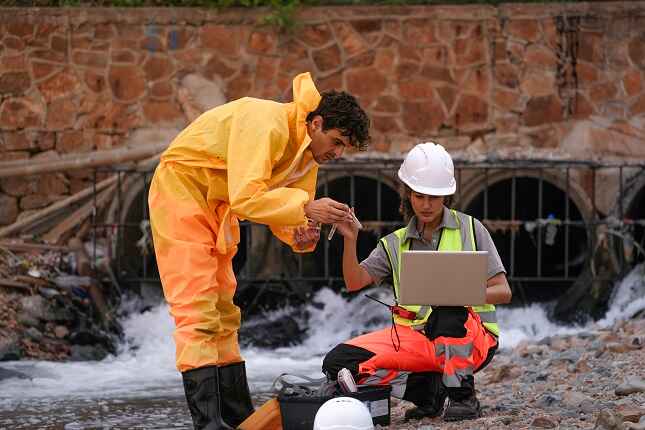Stormwater management software is a powerful tool for improving site compliance and operational efficiency. When properly optimized, it can streamline processes and ensure long-term sustainability. Let’s explore five practical steps to get the most out of your stormwater management software.
Stormwater management software must understand what it wants the software to achieve before integrating it into daily operations. By automating tasks like stormwater inspections and data tracking, sites can stay on top of regulations and reduce risk. For example, goals may include better compliance rates, less manual workloads, or enhanced report accuracy. Set measurable objectives that will guide the system’s configuration and ensure it meets your specific needs.
1) Automate Data Collection and Reporting
One of the main advantages of a stormwater management platform is automation. By automating data collection, software eliminates the need for manual entries, reduces errors, and saves time. This can include rainfall, runoff, or monitor visual inspections based on predefined criteria.
Automation also simplifies reporting by consolidating all relevant data in one system. Reports can be generated automatically and customized to meet regulatory needs. Teams can generate reports at any time, which ensures that inspections and other tasks are up-to-date. This streamlined process saves time and ensures that compliance reports are both accurate and timely.
2) Train Your Team on the Tool’s Features
Investing in stormwater management software is only effective if the team is trained to use it efficiently. Proper training ensures that staff members are familiar with all the features of the software and can utilize them to their full potential. Training should cover data entry, report generation, and how to interpret alerts or notifications. When everyone understands the software’s capabilities, it leads to fewer mistakes and more streamlined operations.
To ensure effective training, create a support system where team members can ask questions and share tips. Over time, regular training sessions will help teams stay updated on new features or best practices. A knowledgeable team will make the tool more effective, and it will continue to provide long-term value to the site.
3) Integrate the Software with Other Systems
The software, with other site systems, boosts its effectiveness. For example, connecting it to weather monitoring tools provides real-time rainfall data, triggering actions like inspections or reports. Similarly, link the software to inventory management systems ensures materials and equipment are available when needed.
Furthermore, connecting the software to regulatory databases ensures compliance tracking remains up-to-date. This guarantees that all legal requirements are met without manually tracking changes in laws or regulations. With a smooth data flow between systems, the software becomes more powerful and minimizes the risk of errors or missed deadlines.
4) Regularly Review and Adjust Settings
Even after implementation, stormwater management software requires regular maintenance and updates. Over time, regulatory requirements or site-specific needs may change, and the software should be adjusted accordingly. Regular reviews ensure that settings remain relevant and optimized for the current environment.
This review process should involve assessment of performance metrics such as compliance rates and task completion times. By identifying any areas that could use improvement, teams can make necessary adjustments. Software updates or feature additions may also be required to take advantage of new capabilities or improve efficiency. Consistent optimization ensures that the software remains a valuable tool for the long term.
To achieve lasting results with stormwater management software, sites need to focus on clear goals, automation, training, integration, and continuous review. When used effectively, the software streamlines stormwater inspections, simplifies compliance reporting, and enhances long-term site management. By following these five steps, teams can maximize the software’s potential and ensure sustainable stormwater management practices.






































